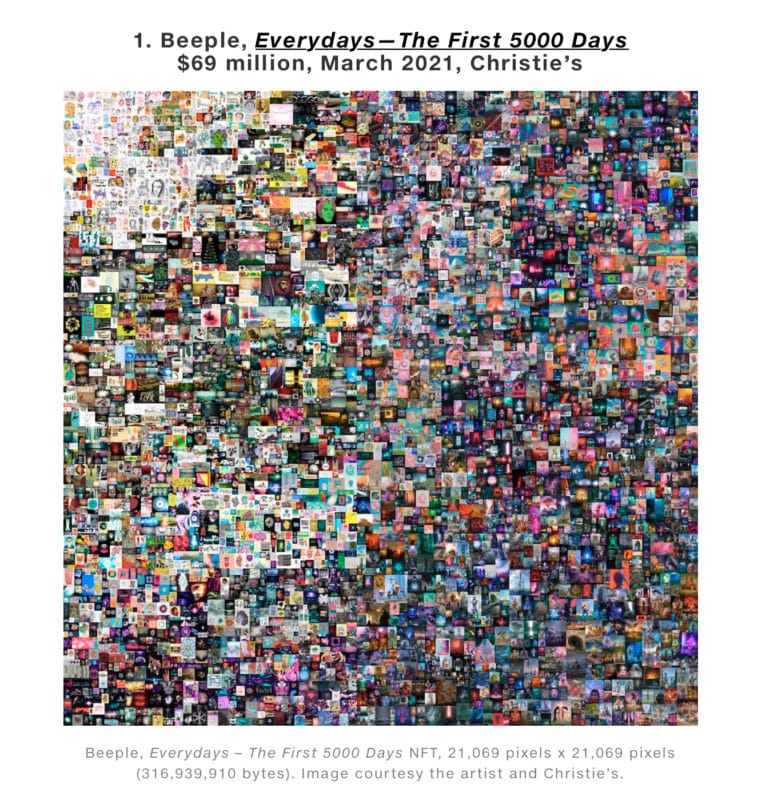This article is part of an ongoing series of basic financial education brought to you by financial industry professionals curated by PocketFin – The Financial School of Real Life. CNBC Africa provides content from PocketFin as a service to its readers but does not edit the articles it publishes. CNBC Africa is not responsible for the content provided by PocketFin.
Non-fungible tokens, or NFTs, are the latest cryptocurrency phenomenon to go mainstream. And after Christie’s auction house sold the first-ever NFT artwork being a collage of images by digital artist Beeple for a whopping $69.3 million NFTs have immediately captured the world’s attention.

What are NFTs?
NFT’s basically transform digital works of art and other collectibles into one-of-a-kind, verifiable assets that are easy to trade on the blockchain.
Although that may be far from simple for the regular layman to understand, the payoff has been huge for many artists, musicians, influencers and the like, with investors spending top dollar to own NFT versions of digital images. NFT’s were introduced by crypto millionaires and billionaires as a way to diversify their crypto holdings.
Non-fungible tokens are pieces of digital content linked to the blockchain, the digital database cryptocurrencies such as bitcoin and ethereum are hosted on. Unlike NFTs, those assets are fungible, meaning they can be replaced or exchanged with another identical one of the same value, much like a regular R100 note.
NFTs, on the other hand, are unique and not able to be duplicated. Think of rare cards or coins or a limited-edition pair of shoes: NFTs create scarcity among otherwise infinitely available assets and there’s even a certificate of authenticity to prove it. NFTs are typically used to buy and sell digital artwork and can take the form of GIFs, tweets, virtual trading cards, images of physical objects, video game skins, virtual real estate, sound clips and more.
How to buy NFTs
Essentially, any digital image can be purchased as an NFT. But there are a few things to consider when buying one, especially if you’re new to this exciting world of NFT. You’ll need to decide what marketplace to buy from, what type of digital wallet is required to store it and what kind of cryptocurrency you’ll need to complete the sale.
The most popular marketplace is Opensea and Nifty Gateway.
A big concern regarding the NFT industry is the potential of high fees. Most marketplaces charge what’s called a “gas” fee, which is the energy required to complete the transaction on the blockchain. Other fees can include the costs for converting currency into ethereum (the currency most commonly used to buy NFTs) and closing expenses.
How to sell NFTs
NFTs are also sold on marketplaces and the process of transacting can vary from platform to platform. You would ideally upload your content to a marketplace such as the two mentioned above and then follow the instructions to turn it into an NFT. You’ll be able to include specifics such as a description of the work and suggested pricing.
Most NFTs are purchased using the ethereum or other ERC-20 tokens.
How to make an NFT
Anyone can create an NFT. All that’s needed is a digital wallet, a small purchase of ethereum and a connection to an NFT marketplace where you’ll be able to upload and turn the content into an NFT or crypto art.
In conclusion, although we have seen progress and more clarity within the NFT space, there is still a way to go before this novel application of blockchain technology reaches mass adoption. The technology has definitely come a long way since its inception in 2012, but it will undoubtedly take some more time before it is proven that NFTs are more than just an ultra-niche sector for early adopters to play in and could potentially carry the gains of its predecessor crypto tokens.